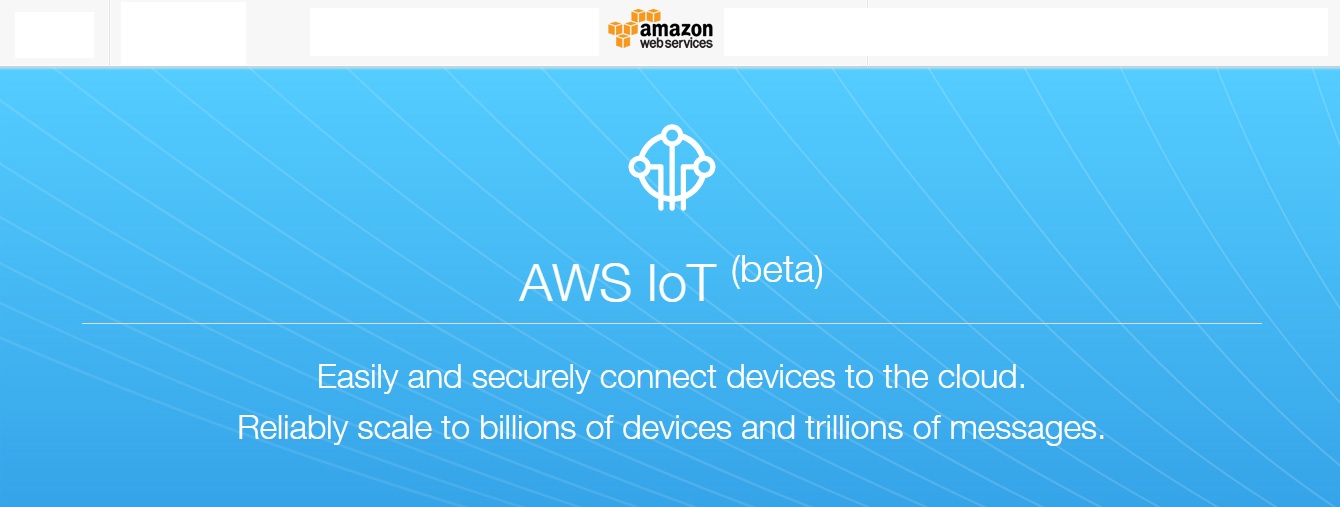Seattle, Oct. 9, 2015: Amazon has taken the initial jump into the Internet of Things (IoT). One of its companies, Amazon Web Services, Inc. has announced AWS IoT, a platform for devices to connect to AWS services to allow companies to store, process, analyse, and act on the volumes of data generated by them on a global scale.
Normally, connected devices operate via applications that communicate with them using APIs, but devices may not always be available to respond to API calls because of intermittent connectivity or because of power constraints. AWS IoT, on the other hand, creates a virtual version, or “shadow” of each connected device that includes all of the information about the device’s state and is always available so that applications can check the device’s status and take actions that are automatically sent to the device once it reconnects.
Devices connect to AWS IoT’s Device Gateway, and manufacturers can set rules for how AWS IoT handles the data they send, and the actions they take when various conditions are met (such as sending an alert when a pressure sensor reports an unusually high reading or a motion detector is triggered). Amazon says AWS IoT provides an SDK that makes it easy for developers to use the AWS IoT functionality from connected devices, and from mobile and web applications.
Further, a number of semiconductor manufacturers also have “starter kits” powered by AWS IoT that embed the AWS IoT Device SDK and offer connectivity to AWS IoT out of the box.
With AWS IoT, customers will have a pay-as-you-go option that handles the heavy lifting involved in connecting any number of disparate devices, allowing them to securely interact with each other, Cloud services, and applications while keeping them up-to-date, and collecting, analyzing, and taking action on the continuous streams of data they generate.
“The promise of the Internet of Things is to make everyday products smarter for consumers, and for businesses to enable better, data-driven offerings that weren’t possible before. World-leading organizations like Philips, NASA JPL, and Sonos already use AWS services to support the back-end of their IoT applications,” said Marco Argenti, Vice President, Mobile and IoT, AWS. “Now, AWS IoT enables a whole ecosystem of manufacturers, service providers, and application developers to easily connect their products to the cloud at scale, take action on the data they collect, and create a new class of applications that interact with the physical world.
Here’s what customers can do with AWS IoT:
Connect devices to the Cloud and to each other: Devices connect to AWS IoT via the Device Gateway using both HTTP and Message Queue Telemetry Transport (MQTT), an industry-standard, lightweight communication protocol designed for sensors and mobile devices, making them inter-operable independent of the protocol they use. AWS IoT also supports other industry-standard and custom protocols that customers may have already implemented, and devices can communicate directly with each other regardless of the protocol they use.
Secure data and interactions: AWS IoT provides mutual authentication so that data is never exchanged between devices and AWS IoT without proven identity, and encrypts all data coming into and out of connected devices. Customers can generate and embed security credentials in their existing connected devices, or AWS IoT can generate new ones when devices are first activated.
Process and act upon device data (Rules Engine): AWS IoT’s rules engine lets customers define rules that filter, process, and route data between devices, AWS services, and applications. Using the AWS Management Console, the AWS Command Line Interface (CLI), or AWS IoT APIs, customers can create rules that apply to data from a single device (such as a sensor), a group of devices (such as a sensor array), or a mix of devices and data sources (such as a sensor array and data stored in Amazon DynamoDB).
Allow cloud applications to interact with connected devices even when they are offline: AWS IoT creates a persistent, virtual version, or “shadow,” of every device that stores the latest state of a device so that applications or other devices can read messages from the device and interact with it anytime – even if it is offline. Applications can read the state of a device or set a desired future state through API calls, and AWS IoT takes care of setting the correct state, sending only relevant changes to the device once it reconnects.
Get started quickly with AWS IoT Starter Kits from leading hardware manufacturers: Through the new AWS Hardware Partner Program, a growing ecosystem of semiconductor manufacturers, including Arrow, Broadcom, Intel, Marvell, Mediatek, Microchip, Qualcomm, Renasas, SeedStudio, and Texas Instruments are offering IoT starter kits powered by AWS that include the AWS IoT SDK and hardware components that are ready to connect to AWS IoT.
Image Credit: AWS

